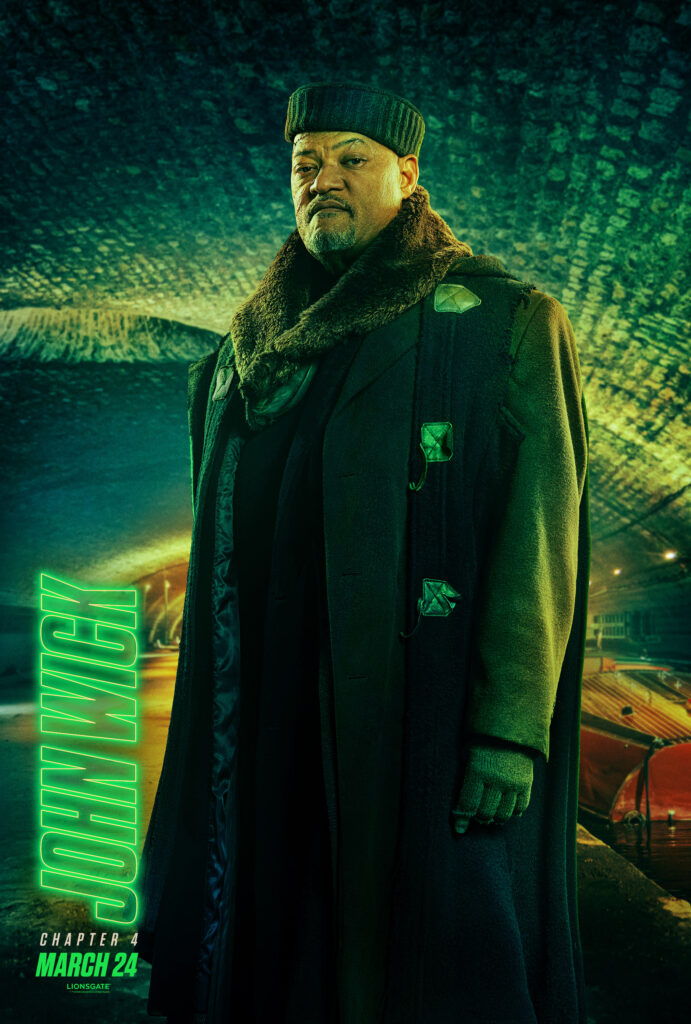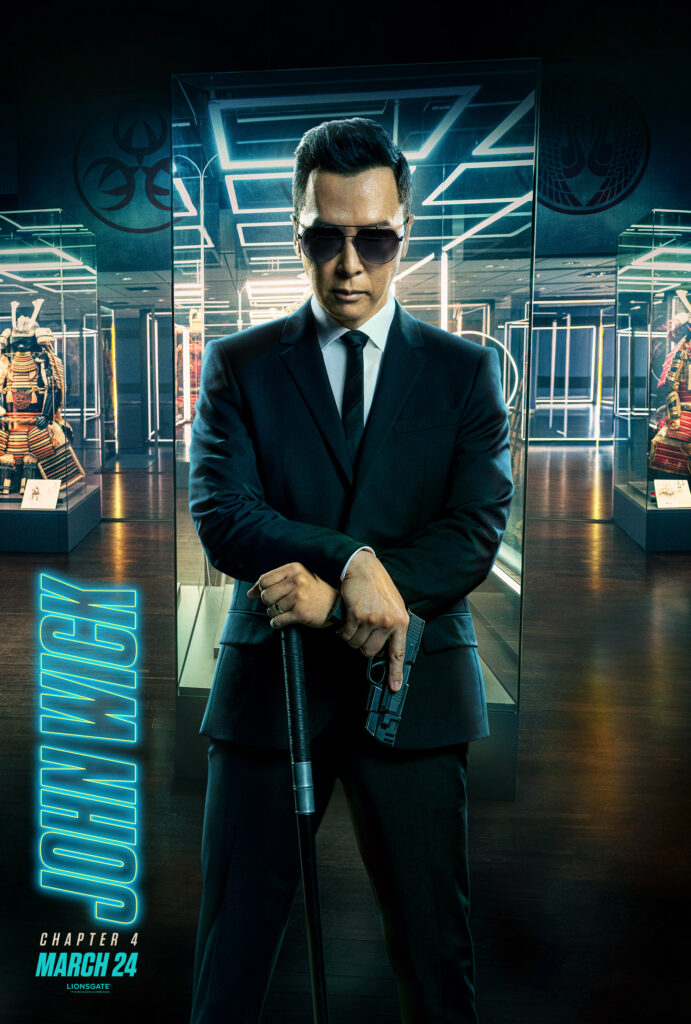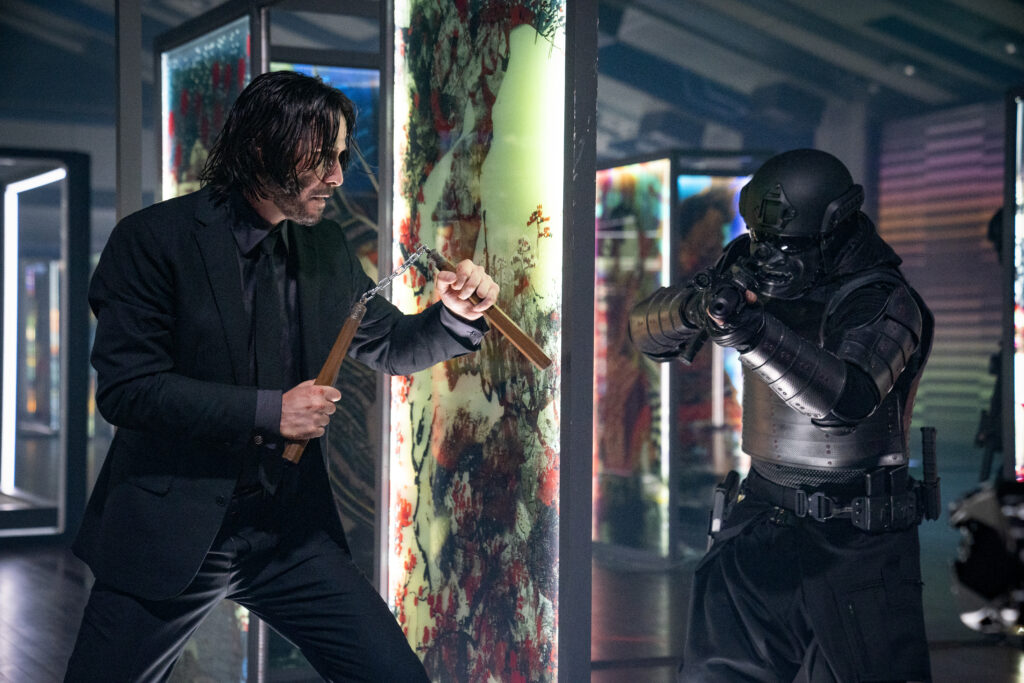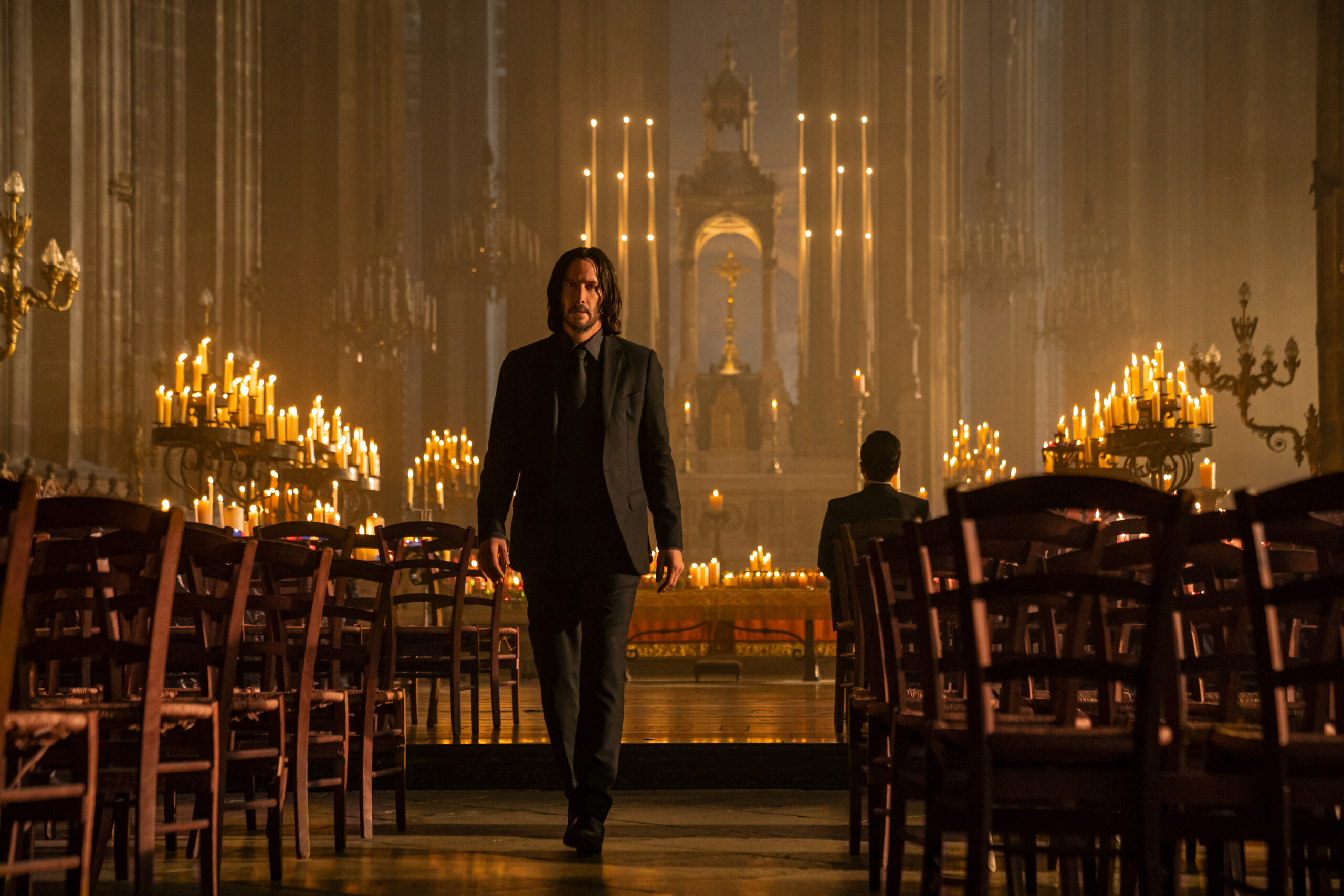Editor’s Note: This review contains spoilers for the first three “John Wick” films.
Despite being on its fourth installment, the “John Wick” franchise shows no sign of slowing down.
Like many others, I did not watch the “John Wick” movies until they arrived on HBO Max. I watched the first movie and was deeply unimpressed.
While its premise is iconic — a retired hitman loses his puppy to mafia members and seeks revenge — its execution was lackluster. Keanu Reeve’s line delivery left a lot to be desired and the fights had yet to shine as the ones in later installments do.
Despite this, I am glad I continued watching the later installments because, with each movie, the action became more creative, and the story more engaging.
“John Wick: Chapter 4” does not stop that trend, as it is easily the best movie in the franchise.

Laurence Fishburne as The King in John Wick: Chapter 4.
Taking place six months after the events of the third movie, John Wick hunts down members of the High Table with the help of The King, played by Laurence Fishburne, when he finds out he must face a new foe, the Marquis, played by Bill Skarsgård.
The action in this new installment is just as good as you’d hope for. The cinematography by Dan Laustsen, who had previously worked on the 2018 Oscars Best Picture winner, “The Shape of Water”, enhances the fight scenes greatly. They are only made better by Keanu Reeve’s physical acting and the numerous stuntmen and women who did excellent work making the fights seem brutal and exhausting.
This movie introduces many new faces, but all of them get outshined by the two standouts, Donnie Yen as the blind assassin, Caine and Shamier Anderson as Mr. Nobody. These two characters steal the show with their creative fight scenes and sympathetic motives, especially for Yen’s character.
Another performance standout was Scott Adams as the outrageous and sleazy mob boss, Killa. His performance was as if Colin Farrell’s Penguin from “The Batman” had a lemon in his mouth the entire time. His performance was so entertaining that I often wished he was the main villain of the film.

Donnie Yen as Caine in “John Wick: Chapter Four.”
While Bill Skarsgård’s performance is sophisticated and refined, his character lacks a real presence in the movie and falls into the trap of being as forgettable as the past “John Wick” villains. Though the villains in these movies might not be the most complex, the story itself becomes more interesting with each installment, and the film’s commentary on laws and systems are surprisingly layered, enough to require four movies to be fully fleshed out.
In the first “John Wick” movie, the story gives us a windowed-view into this criminal underworld and its laws. The plot seems to lead the audience into believing that the system works. The Russian mafia’s son kills John Wick’s dog, John Wick gets revenge on him and the rest of the Russian mafia and the criminal underworld either ignores or helps Wick on his bloody mission.
The second film then changes the theme entirely. In this plot, a mafia boss named Santino D’Antonio forces Wick to repay a blood debt by murdering his sister, after which he betrays Wick and puts a bounty on him. Wick is forced to kill D’Antonio in a continental to survive, which breaks their rules. The movie ends with John being given only an hour before he is labeled “excommunicado” and a price is placed on his head.

Keanu Reeves as John Wick in the fourth installment of the franchise, in one of the film’s many combat scenes.
The third and fourth films show how Wick struggles to survive after being outcast by the criminal underworld. He is forced to rely on his closest friends to help him, which leads to most of their deaths. These movies show how a system can work, but it asks the question, “what if someone fell through the cracks of the system?”
“John Wick” continues the theme until its tragic conclusion. At the end of the fourth film, Wick is forced to make a decision that answers those questions, one that will deeply shock fans.
Though everyone comes to see these movies for their creative action, great cinematography, and Keanu Reeve’s awkward responses, it is worth noting how fascinating that a story, and its messages, could evolve with each new installment, to its bitter-sweet end that is worth every dollar to see in theaters.
Quay Skankey can be reached via email at peregrineh@sagebrush.unr.edu, on Twitter @SkankeyQuay.









